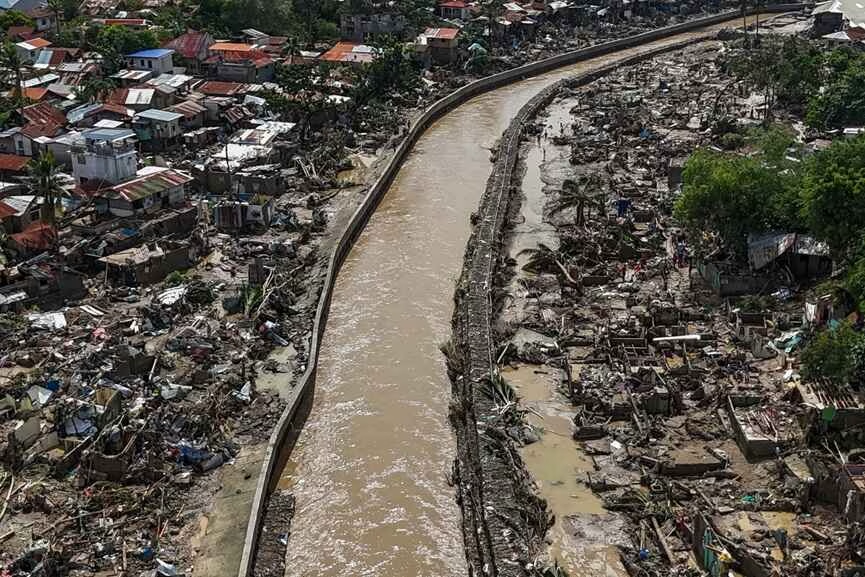Manila/Hanoi: At least 114 people have been confirmed dead and 127 remain missing in the Philippines after Typhoon Kalmaegi tore through the country earlier this week.
The typhoon, locally known as Tino, made landfall in eight areas across central Philippines, leaving behind widespread destruction in what has become the country’s deadliest natural disaster this year. Entire neighborhoods in Cebu province were flattened, roads were blocked by debris, and vehicles lay overturned as floodwaters receded.
More than 200,000 residents were evacuated before the storm struck, but many returned to find their homes destroyed. Volunteers and local authorities have now begun a massive cleanup effort, clearing mud and rubble from streets and houses.
“The challenge now is debris clearing,” said civil defense official Raffy Alejandro in a local radio interview, adding that clearing the wreckage is vital to locate missing persons and speed up relief operations.
President Marcos, after meeting with disaster response teams, described the storm as a “national calamity.” He said the state of emergency would help the government unlock emergency funds faster and curb food hoarding and overpricing.
I am deeply saddened by the tragic loss of life and extensive devastation caused by Typhoon Kalmaegi in the Philippines. Reports of severe flooding, landslides and the destruction of homes and infrastructure are heartbreaking. On behalf of the Government and people of Malaysia, I… pic.twitter.com/SvrutlIBiW
— Anwar Ibrahim (@anwaribrahim) November 6, 2025
But officials fear the crisis may not be over. A second system, Typhoon Fung-wong- locally called Uwan is gathering strength over the Pacific and could hit the northern Philippines in the coming days. Meteorologists expect it to develop into a super typhoon by Saturday, with a growing likelihood of landfall in Luzon, home to the capital, Manila.
Meanwhile, Kalmaegi has regained intensity as it moves toward Vietnam. The United States military’s Joint Typhoon Warning Center said the storm strengthened into a Category 4 system on Thursday morning and is expected to slam into Vietnam’s central coast near the city of Quy Nhon later in the day.
Vietnamese authorities have begun evacuating nearly 350,000 people from coastal and low-lying areas in Gia Lai province and other central regions. Thousands of soldiers have been mobilized to assist with evacuation and emergency preparations. Officials warned of heavy rain, strong winds, and flooding across several provinces, threatening to disrupt agriculture, including the ongoing coffee harvest. Aviation authorities said operations at eight airports, including Da Nang International Airport, may also be suspended.
























